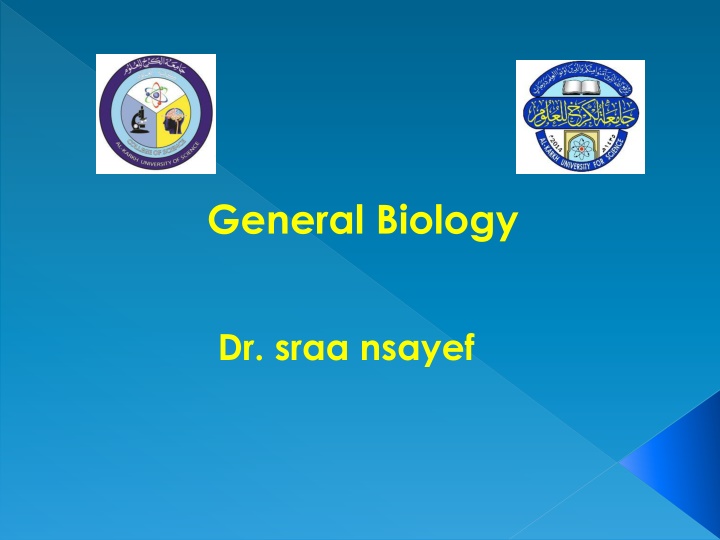
Biology and Chemistry of Life: Essential Concepts Explained
Explore the fundamental principles of general biology and the chemistry of life in this informative content. Learn about organic molecules, carbohydrates, lipids, proteins, and nucleic acids, with detailed explanations and images to aid your understanding. Understand the importance of carbon in biological structures and delve into the categories of carbohydrates, lipids, and their subtypes like triglycerides, phospholipids, and steroids. Discover the structural components of cell membranes and gain insights into the diverse world of biochemical molecules that form the basis of life.
Download Presentation

Please find below an Image/Link to download the presentation.
The content on the website is provided AS IS for your information and personal use only. It may not be sold, licensed, or shared on other websites without obtaining consent from the author. If you encounter any issues during the download, it is possible that the publisher has removed the file from their server.
You are allowed to download the files provided on this website for personal or commercial use, subject to the condition that they are used lawfully. All files are the property of their respective owners.
The content on the website is provided AS IS for your information and personal use only. It may not be sold, licensed, or shared on other websites without obtaining consent from the author.
E N D
Presentation Transcript
General Biology Dr. sraa nsayef
Chemistry of life Lec Lec (( ((3 3)) ))
Chemistry of life The molecules of life (carbohydrates, lipids, proteins and nucleic acid) are organic molecules. Organic: type of molecule that consist primarily of carbon and hydrogen atoms. Carbon is a central element to life because most biological molecules are built on a carbon framework.
1- Carbohydrates Carbohydrates are the most abundant biological molecules. Cells use carbohydrates to help build cell parts or package them for energy monosaccharide's (monomers) oligosaccharides (Dimers) Polysaccharides (polymers)
A. Monosaccharide's:- The simple class of the carbohydrate, Consisting of a single sugar monomer, glucose molecule is example. B. Oligosaccharides:- carbohydrate that consist of short chain of sugar unit, sucrose is example. C. Polysaccharides: complex carbohydrate that consist of straight or branched chains of monosaccharide.
2- Lipids The most important characteristics of lipids for biology is that they are relatively insoluble in water. The most important subclasses in your body are triglycerides, phospholipid and steroids. There are two type of Fatty acids? 1- Saturated fats 2-Unsaturated fats
Phospholipids: they are the primary structural component of cell membrane. Like fats, phospholipids have a molecule of glycerol as the back bone, but they have only two fatty acids tails.
Steroids consist of backbone of 3 six- membered carbon rings and 1 five membered carbon ring to which any number of different groups may be attached.
3- Proteins Proteins are built from amino acids. Amino acid is a small organic compound that consists of an amino group, a carboxyl group (an acid), an atom of hydrogen, and one or more atoms called its R group.
4-Nucleic acids Another important class of organic molecules is the nucleic acids, DNA (deoxyribonucleic acid) and RNA (ribonucleic acid). A molecule of DNA Nucleotides Each nucleotides consist of:- *Phosphate group *Sugar group *Nitrogenous base.

